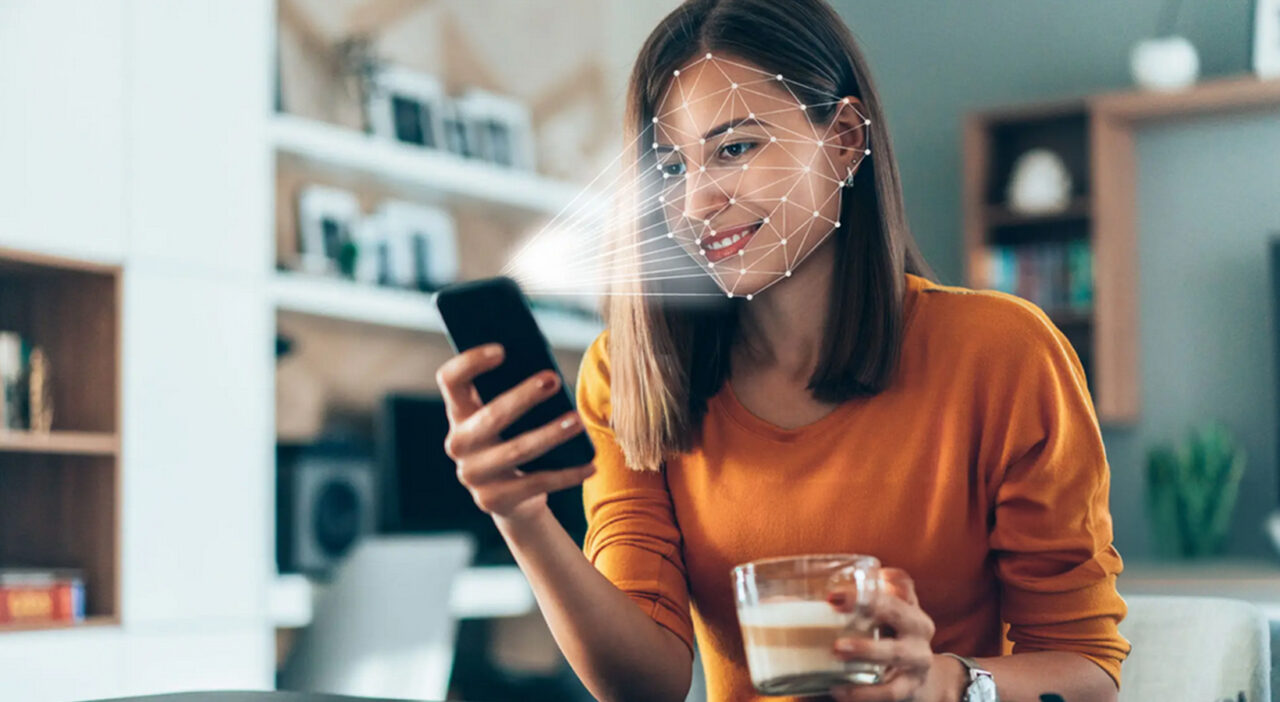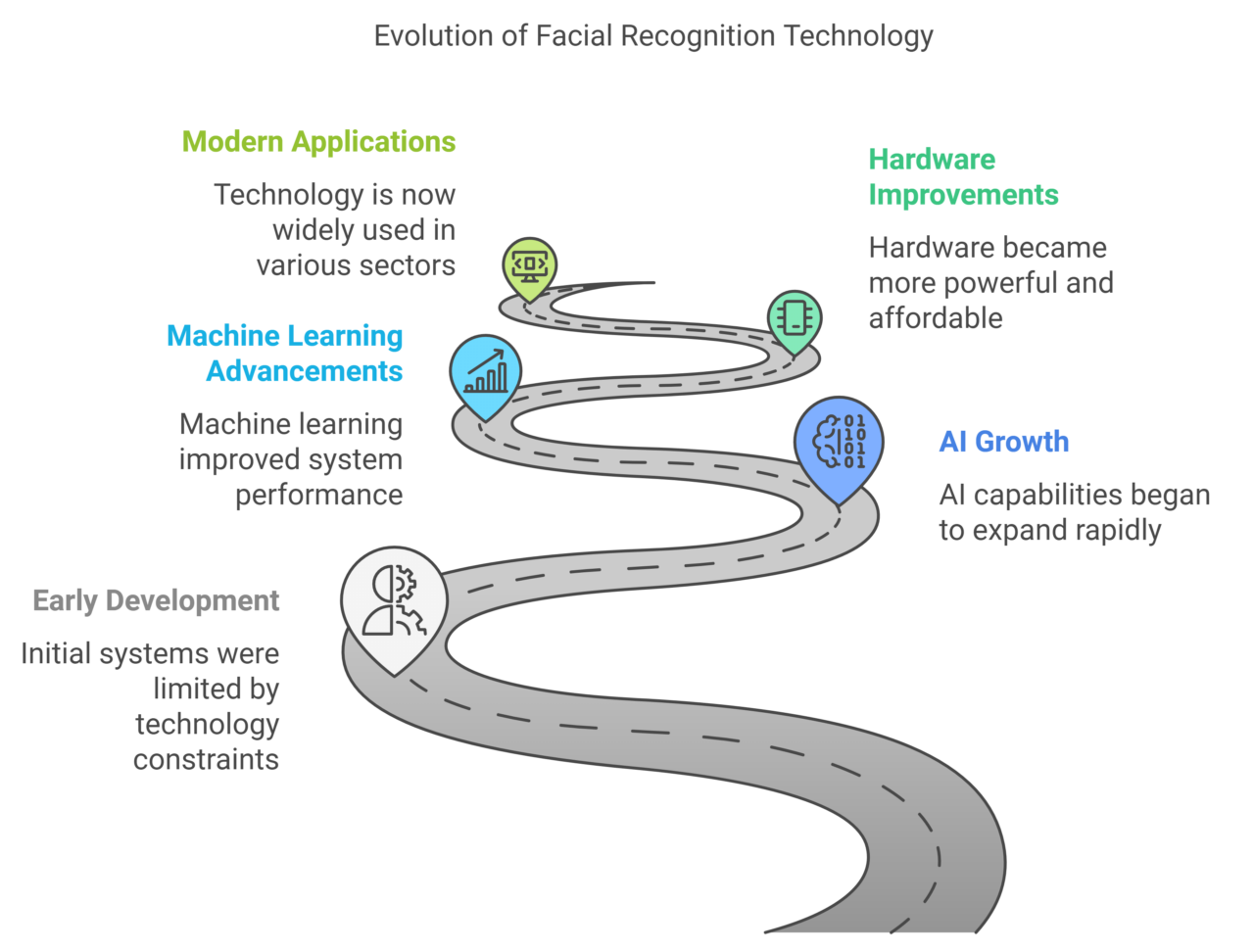
In our technologically advanced era, we eagerly anticipate innovations that enhance our daily lives. As technology evolves, it becomes more secure and vulnerable, prompting us to rely on measures like passcodes, fingerprints, and facial recognition for protection. However, many of these security solutions often require expensive external devices or equipment. Why can’t we harness these accessible tools to enhance our security? This begs the question: What about our budget smartphones and their cameras?
The Evolution of Facial Recognition Technology
Facial recognition technology has existed since the 1960s, but its application has evolved significantly over the decades. In the early days, facial recognition systems were limited by computational power, cost, and accuracy. However, facial recognition has become a highly reliable and cost-effective solution with the exponential growth in AI capabilities, machine learning, and hardware advancements. Today, it is being deployed in various sectors like corporate offices, educational institutions, and healthcare facilities for different use cases, including security and access control.

In recent years, the introduction of deep learning and neural networks has significantly improved the accuracy of facial recognition systems. These advancements enable AI-driven systems to identify and verify individuals quickly, even in complex environments with varying lighting conditions or obstructions like face masks.
Face Recognition in Attendance Management
Attendance management typically involves two key steps: identification and verification. Traditional methods such as manual sign-ins or punch cards require physical input from employees or students, which can be time-consuming and error-prone. Systems that rely on ID cards or biometric scanners often face challenges like forgotten cards, lost badges, or equipment malfunctions. Face recognition technology addresses these challenges by offering a contactless, real-time solution that requires only a camera and a computational device like a smartphone or computer.
One of the significant advantages of face recognition systems is that even a budget smartphone camera can be utilized to capture images or video feeds of individuals. These cameras, though cost-effective, provide sufficient image quality for AI algorithms to process and accurately identify people. This makes face recognition systems highly accessible, even for organizations or institutions with limited resources. Once the system recognizes a person, it automatically logs their attendance into a central database, eliminating the need for manual checks.
An example that we used to implement this system
Information addition phase:
Recognition phase:
The benefits of using face recognition for attendance management include:
In conclusion, face recognition technology presents a modern, efficient, and secure way to manage attendance in organizations and educational institutions. With the ability to use even budget smartphone cameras, it is a cost-effective solution that offers superior accuracy, efficiency, and security compared to traditional methods.
How AI-Based Facial Recognition Works
Facial recognition systems on Android combine several AI and computer vision techniques to accurately detect and recognize faces in real-time. Below is a breakdown of how these technologies work together:
1. Face Detection: Capturing Faces in Real Time
- The first step is to capture live images or video streams using CameraX. CameraX is responsible for providing a continuous feed from the camera.
- The app uses ML Kit to detect faces in the camera feed. ML Kit’s face detection model identifies the location of the face within the image. It can handle different face orientations, partial occlusions, and varying lighting conditions, ensuring faces are detected accurately even in real-world scenarios.
2. Feature Extraction: Identifying Facial Landmarks
- Once a face is detected, ML Kit extracts specific landmarks like the eyes, nose, mouth, and jawline. These landmarks are essential for distinguishing one individual from another.
- The app then converts these landmarks into numerical values, representing unique features of the face. This feature extraction process creates a mathematical representation of the face, which can be used for further recognition.
3. Face Recognition: Matching Faces Using TensorFlow Lite
- After feature extraction, TensorFlow Lite takes over for facial recognition. A pre-trained model (such as FaceNet) running on TensorFlow Lite compares the extracted facial features to a database of known faces.
- The deep learning model evaluates how closely the detected face matches any stored face. TensorFlow Lite is highly optimized for mobile devices, allowing real-time processing without excessive lag. The model can recognize faces even under challenging conditions, like different angles or facial expressions.
4. Data Management: Storing and Retrieving Facial Data
- The facial recognition app can store facial embeddings (unique mathematical representations) in a local or cloud-based database. Each time a face is detected and recognized, the app can retrieve matching data from the database and verify the person’s identity.
- The system can be used to log and manage user-specific information, making it useful for a variety of applications like user authentication, attendance tracking, or access control.

Future Scope
Facial recognition technology holds immense potential for the future of attendance management and beyond. Here are some exciting possibilities:
- Integration with Access Control: Facial recognition systems can be integrated with access control systems, allowing organizations to grant or restrict access to specific areas based on an individual’s attendance or role.
- Multi-Factor Authentication: For enhanced security, facial recognition can be combined with other authentication methods such as voice recognition or biometric fingerprint scanning.
- Data Analytics: AI-powered facial recognition systems can offer insights into attendance trends, productivity levels, and employee or student engagement. These insights can help organizations improve efficiency and decision-making.
In conclusion, facial recognition technology is revolutionizing attendance management by providing a faster, more accurate, and secure solution. As AI continues to advance, facial recognition systems will become even more sophisticated, offering new possibilities for organizations to enhance their operational efficiency.
About the Author

Aravind Narayanan is a Software Engineer at Founding Minds with over 3 years of experience in software development, specializing in Python backend development. He is actively building expertise in DevOps and MLOps, focusing on streamlining processes and optimizing development operations. Aravind is also experienced in C++ and Windows application development. Among his versatile skill set, he is excited to explore the latest technologies in MLOps and DevOps, always seeking innovative ways to enhance and transform development practices.


